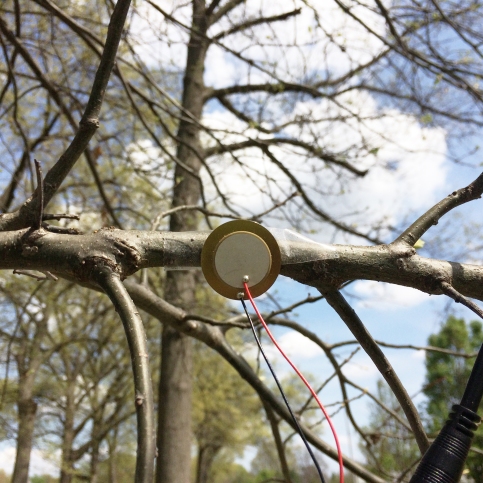Another set of tests with listening to the trees today, this time using simpler microphones – two 27mm piezo discs (acoustic pickups). The simplicity of their design offers other possibilities for connecting them to the trees. I tried two different configurations today; slotting them into spaces between the bark, and adhering them to a branch with two-sided tape. Having two of these microphones also allowed for recording in “stereo.” I inserted the microphones into the tree one on either side of one of our boreholes and began speaking into, blowing into, and prodding the borehole. (it’s best to listen to these files with headphones)

I also tried adhering the microphones to two locations on one low-hanging branch. The left channel (ear) microphone was placed closest to the trunk and the right channel (ear) microphone was placed further out along the branch. I then began repeatedly bending the branch.

The second recording marks a significant step in the tree listening experiments. Rather than generating a sound with an external device and recording that sound as it travels through the tree, the recording of the branch bending is the sound of the tree itself as it responds to an external stress. The result is much richer and the difference in location of the microphones is audibly detected. There is evidence to suggest that smaller plants (and perhaps trees?) produce an immediate electrical response when subjected to stresses such as having a leaf torn, or having stems shaken. If this holds for our oak trees, capturing that electrical variation and feeding it through audible output (vocoder, MIDI controller) might be one way to give a voice to the trees.
